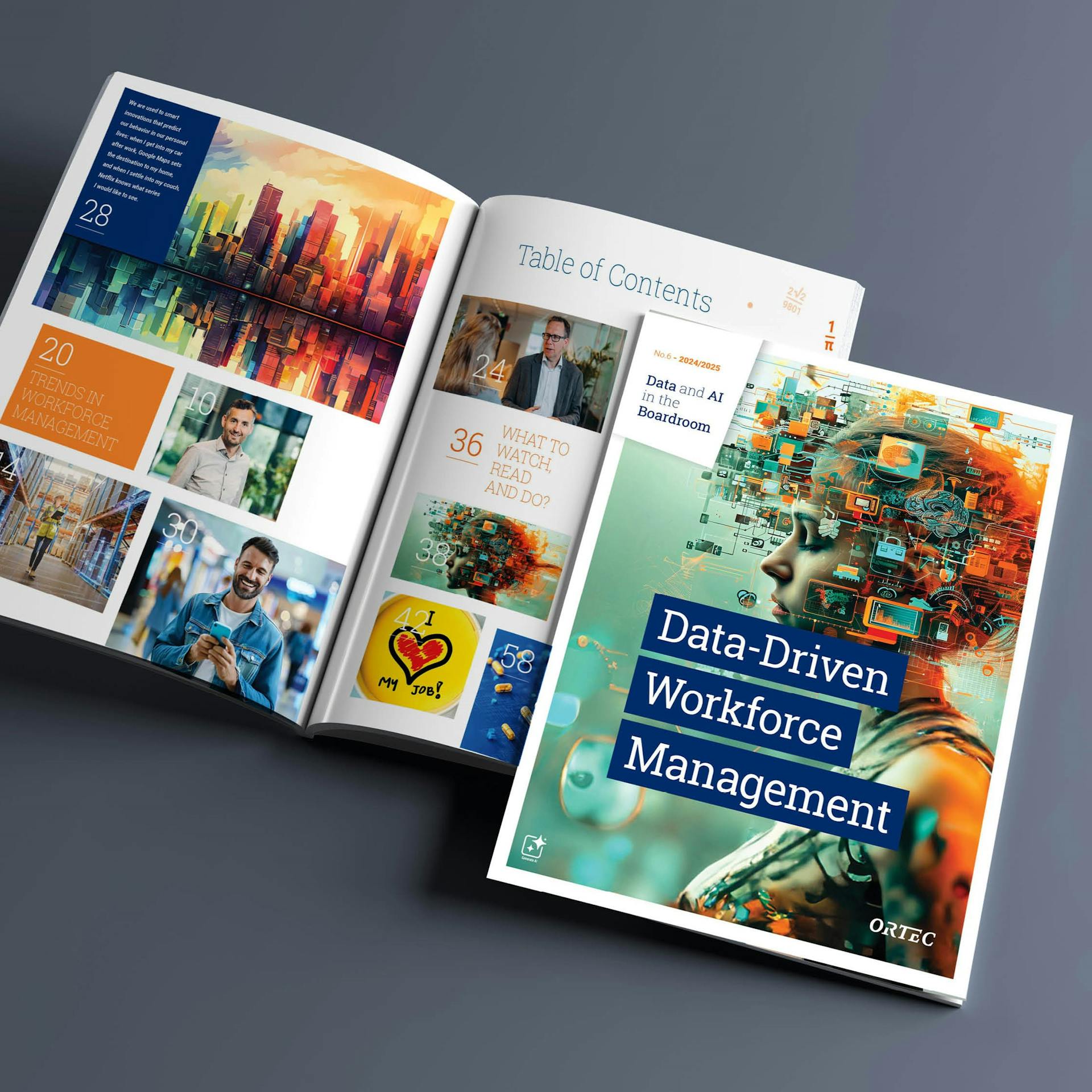Navigating the evolving workforce landscape: trends in workforce management
Read time: 10-12 minutesAs the world of work continues to evolve, organizations are facing unprecedented challenges and opportunities. From technological advancements to shifting demographics and changing employee expectations, workforce management has become increasingly complex. To stay ahead, executives must be aware of the latest trends and understand their implications for their organizations. This article explores four key workforce management trends that are shaping the future of work.
This article is part of the 6th issue of our magazine Data & AI in the Boardroom.

The Rise of a Multigenerational Workforce
The workforce is becoming increasingly diverse, with individuals from multiple generations working side by side. The youngest generation now includes a significant number of contractors and freelancers, which adds a new dimension to workforce management. Understanding the unique values, expectations, and preferences of each generation is crucial for creating a productive and inclusive work environment.
- Understanding generational differences: Recognizing the unique values, expectations, and preferences of different generations, such as Baby Boomers, Generation X, Millennials, and Generation Z.
- Tailoring strategies: Develop workforce management strategies that cater to the diverse needs of each generation, including those who are engaged as contractors or freelancers, to foster a more inclusive and productive work environment.

The Growing Importance of Employee Experience
Employee experience has become a critical factor in attracting, retaining, and engaging top talent. Focusing on creating a positive and supportive work environment that fosters employee satisfaction, loyalty, and productivity.
- Creating a positive culture: A positive employee experience is essential for attracting and retaining top talent, boosting productivity, and fostering a strong company culture.
- Measuring and improving: Regularly measure employee satisfaction and identify areas for improvement to create a more engaging and fulfilling workplace.
The Impact of Technology on Work
- Automation and artificial intelligence are reshaping the way work is done, leading to both benefits and challenges. However, the ethical implications of these technologies must be carefully considered.
- Automation and AI: Automation and artificial intelligence are transforming work processes, leading to increased efficiency and productivity.
- Ethical considerations: As organizations increasingly rely on technology, it is vital to address ethical implications such as privacy, bias, and job displacement, ensuring that technology benefits all stakeholders.
From the Pages of Data & AI in the Boardroom
This article is part of the 6th issue of our magazine Data & AI in the Boardroom.
Data-Driven Workforce: The Future Is Now
Discover how data and AI are transforming workforce management. Explore the latest trends, best practices, and real-world examples. Gain insights from experts on optimizing scheduling, balancing supply chain and workforce, and leveraging technology for improved efficiency.

Addressing Labor Shortages and the Skills Gap
- The issue of labor shortages, exacerbated by an aging population, is a significant challenge for many industries. This trend necessitates a focus on automation, attracting international talent, and being an attractive employer. Additionally, the skills gap is evolving, with a growing need for roles that are not easily automated, such as manual labor and service jobs.
- Labor shortages: Develop strategies to address labor shortages, including investing in automation, recruiting international talent, and enhancing employer attractiveness to retain and attract skilled workers.
- Skills gap and upskilling: While there is a need for advanced skills in some sectors, there is also an increasing demand for simpler, non-automated manual work. Organizations should invest in training programs that address both the technological and manual skill needs to ensure workforce adaptability and competitiveness.
In summary, navigating the evolving workforce landscape requires a multifaceted approach that incorporates the latest trends in workforce management. As organizations grapple with a multigenerational workforce, employee experience, technological advancements, labor shortages, and the skills gap, leveraging data, mathematics, and analytics becomes crucial. These tools enable organizations to make informed decisions, optimize operations, and address emerging challenges effectively. Predictive modeling, for example, can help forecast staffing needs and identify skill gaps, while advanced analytics can guide resource allocation and improve workforce efficiency. By harnessing these analytical tools, organizations can stay competitive, adapt to changing market demands, and ensure a more effective and engaged workforce.
Questions for Reflection
In business, it’s essential to stay ahead of the curve and anticipate the challenges and opportunities that lie ahead. By reflecting on the key workforce management trends discussed in this article, you can gain valuable insights into how to navigate the evolving workforce landscape.
The following questions are designed to help you consider the implications of these trends for your specific role and organization. By thoughtfully reflecting on these questions, you can develop a more effective and strategic approach to workforce management.
- How can your organization effectively leverage the strengths and perspectives of a multigenerational workforce, including contractors and freelancers? Consider strategies such as targeted communication, mentorship, or flexible work arrangements.
- What strategies can be adopted to address current labor shortages in your industry? Additionally, how can your organization manage the impact of technological advancements on job displacement and evolving skill requirements?
- What specific investments in employee training and development will ensure your workforce remains competitive and adaptable to future trends? How can you address both advanced and manual skill needs through these programs?
- How can your organization balance the benefits of an AI-powered workforce with the potential risks of job displacement? What strategies can ensure that both automated and manual labor needs are effectively managed?


